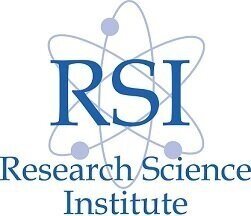How to get into MIT Research Science Institute (RSI)
by Daniela Reichelstein
What’s RSI and How Do You Get Into RSI?
So, what is the Research Science Institute (RSI) and how do you get into RSI? RSI is the preeminent summer research program for exceptional high school students (mostly rising seniors) who are passionate about STEM. Sponsored by the Center for Excellence in Education (CEE) and hosted by MIT, RSI provides participants with a unique opportunity to conduct a full cycle of scientific research utilizing resources of the highest quality. A major bonus is that the program is entirely cost free – it covers all expenses associated with travel, room and board and research supplies. Read more about other free or low-cost summer programs for high school students here.
The six-week program commences with one week of intensive, college-level coursework taught by MIT professors and alumni. Then, for the next month, students delve into independent research projects at world-class facilities, such as labs at MIT and other reputable Boston-area universities, hospitals and corporate research facilities. For example, Swati Goel, who is now studying computer science at Harvard, conducted research at the Lazer Lab at Northeastern University’s Network Science Institute during her time at RSI.
While at RSI, many students get the opportunity to analyze literature relevant to their research topics, draft comprehensive research plans and work with mentors who are experts in their fields. In Swati’s experience, her mentor at the Lazer Lab provided her with a tangible research question that she could make progress towards answering in six weeks. Although she didn’t formulate the research question herself, she was given free rein to approach her research however she wanted. Her mentor was available at all times to provide her with extensive guidance.
During the final week of the program, participants complete a formal research paper and present their findings in both an oral and written format. According to Swati, the research paper component of RSI proved to be a major source of pride. It was also critical in teaching her how to most effectively conduct research in an academic setting because it forced her to think through the decisions she made. In 2022, a distinguished panel of experts selected several written papers and oral presentations for honors. Perusing these will give you an idea of the kind of high-level research that participants conduct.
If you aspire to a career in STEM, RSI should absolutely be on your bucket list. Not only will RSI enhance your college applications and catch the eye of admissions officers at elite schools, it will also give you access to a world-class STEM community with endless networking opportunities. Indeed, RSI not only pairs students with mentors, but also invites esteemed guest lecturers to campus who are leaders in their respective fields. In Swati’s case, she remains in touch with her mentor from the Network Science Institute, who gave her an open invitation to return to the institute at anytime. Swati also cultivated warm friendships while at RSI– in fact, some of her closest friends at Harvard are students she befriended during the program.
The Nitty Gritty: Application Logistics
The good news is that RSI’s application resembles a mini college application. Thus, going through the exercise of completing it will set you up for success when it comes time to tackle your actual college applications. Although the RSI admission guidelines posted on CEE’s website are rather terse, it’s crucial that you give them a read well before you begin the application process.
Let’s start with the timing component. First thing’s first – make sure that you’re eligible to apply. Selected students participate in RSI the summer before their last year of high school. This means that you want to submit your application in the middle of 11th grade. Typically, the application deadline is January 15th for U.S. students and March 15th for international students, but you should double check CEE’s website to verify all deadlines for the current application cycle.
Next, let’s review the various components of the RSI application. The following are required:
1. Responses to five essay questions
2. Brief descriptions of your STEM and non-STEM awards and accomplishments
3. Recommendations by at least two math or science teachers and by a research supervisor if you participated in a research project of 4+ weeks at a university or laboratory (CEE will accept a maximum of three letters)
4. An official high school transcript
5. ALL standardized test scores you have received, including PSAT, SAT, ACT and AP exam scores.
6. Additionally, you’ll be required to select two research fields that you’re interested in along with a subfield for each. For example, you might choose biology as a primary research field and ecology as a subfield within biology.
Given all of these components of the RSI application, it’s recommended that you get a head start on the application during the fall semester of eleventh grade when it becomes available.
The Part You’ve Been Waiting For: How to Standout in the RSI Admissions Process
Part of RSI’s allure is that the program is highly selective. Each summer, it accepts approximately 80 students out of 1,600-1,700 applicants, meaning that the acceptance rate is normally less than 5 percent. Moreover, RSI maintains partnerships with 15 countries and reserves about 30 spots for international students. Accordingly, being accepted to RSI is on par in terms of difficulty with being admitted to an elite U.S. university.
So, how do you catch the attention of the CEE admissions panel? Here are a few tips to consider:
Strengthen your resume with STEM extracurriculars
The meat of your RSI application should comprise all of the prestigious, STEM-related extracurriculars you’ve engaged in throughout high school. CEE’s website states that successful applicants “will have shown the potential for leadership in science and mathematics through their activities in and beyond the classroom.”
This statement reflects that the admissions committee is primarily looking for depth over breadth – in other words, it values a significant time commitment and meaningful engagement in just a few activities, rather than shallow participation in a variety of activities. You’ll want your resume to reflect mastery of a given STEM subject. Accordingly, you should begin preparing this pivotal portion of your application immediately upon entering high school (or even as early as middle school.)
EXCELLENCE IN STEM
To prepare well for the MIT-hosted Research Science Institute (RSI), engage deeply in challenging STEM extra-curriculars and competitions.
There are several ways in which you can enhance your resume in preparation for RSI. First, you want to determine which research fields in STEM you’re most drawn to and pursue extracurriculars in those fields. That way, when you select your two research fields and subfields of interest on the RSI application, your accomplishments will align with those fields, and you’ll be able to write corresponding, thought-provoking essays. Overall, your RSI application will appear to be more cohesive if you pick which STEM fields you’re most interested in early on.
Second, you should pursue deep extracurriculars within the fields that you are passionate about. Enroll in math or science competitions and try to prevail, preferably at the regional, state, national and even international levels. Renowned competitions such as the Science Olympiad, the Chemistry Olympiad, the Math Olympiad, USACO, Regeneron ISEF and the Harvard-MIT Mathematics Tournament (HMMT) will certainly enhance your resume, especially if you go for the gold medal.
Third, as RSI is a research-focused program, you’ll want to obtain prior research experience, ideally at a laboratory or with a university professor. For a bonus, try to get any original research that you’ve conducted published, preferably in a scientific journal. Engaging in long-term research will not only boost your resume but will also help you write essays for your RSI application that explore themes you’ve unearthed in your research.
Finally, consider holding leadership positions that reflect deep involvement in STEM, like serving as president of your high school’s robotics team. Remember, you don’t necessarily have to hold a traditional role to show leadership. As an alternative, you could spend significant time on an independent project of your own, such as inventing a product and patenting it. Really any experience that demonstrates that you took substantial initiative and responsibility in a field of math or science will be helpful.
Craft essays that demonstrate your intellectual vitality and reveal your passion for a STEM field
Swati claims that a major part of what made her stand out as candidate for RSI was the thoughtful admissions essays she crafted. She recommends discussing what you’re most passionate about in STEM, and then “pitching” yourself by weaving in examples of your background that directly relate to your passions. Swati wrote about her dual interests in computer science and environmental science. She referenced previous relevant research that she had performed in these areas alongside a Stanford professor.
Additionally, there is typically one essay question that asks about a student’s future plans. When responding to this essay, Swati recommends keeping in mind that RSI is, first and foremost, a research program. Thus, it’s appropriate to get super specific and think about how your research interests might inform your career path. For her essay, Swati elaborated on the type of research and innovation she planned to implement at the intersection of computer science and environmental science.
A final tip – start drafting those essays early on in the application process. That way, you’ll have the time to revise and perfect each essay.
Study hard for those standardized tests
You’ll be required to submit ALL of your standardized test scores as part of your application. CEE strongly recommends that candidates take the PSAT, which means that you probably should too. Additionally, in order to be a competitive candidate, CEE expects to see PSAT/SAT Math scores of at least 740 and Evidence-Based Reading and Writing scores of at least 700. If you prefer the ACT, then CEE recommends scoring at least a 33 on the ACT math section and a 34 on the ACT verbal section.
Additionally, CEE’s website reveals the emphasis that is placed on a candidate’s test scores: “Lower scores must be offset by strong indicators of mathematical, scientific, and academic potential exemplified in recommendations, high school grades and science activities.” Given these rigorous guidelines, it is worth investing time in studying for standardized tests and retaking them if necessary.
Cherry pick your recommenders and build strong relationships with them
As CEE requires at least two recommendations from your math/science teachers and a third recommendation from your research supervisor if you have participated in an extensive research project of 4+ weeks, take the time to cultivate strong relationships with all of these mentors. Ultimately, the goal is to carefully select recommenders who not only know you well but will also be able to rave about you in their letters of recommendation.
With respect to timing, try to give your teachers and research supervisors at least two months (but preferably more) to draft and submit their letters of recommendation by the January application deadline. Ideally, you’ll want to request all recommendations as early as November of eleventh grade.
When you do so, give your recommenders all of the help they can get upfront – provide them with a copy of your resume and a prepare a list of achievements (such as high-quality work on projects, essays and exams) that you attained while in their class or under their supervision. Doing so will help prevent them from writing you generic letters of recommendation. Remember, you want the CEE admissions panel to read persuasive letters that provide specific examples of your stellar work and performance in math and science.
We’re here and ready to help - so reach out!


